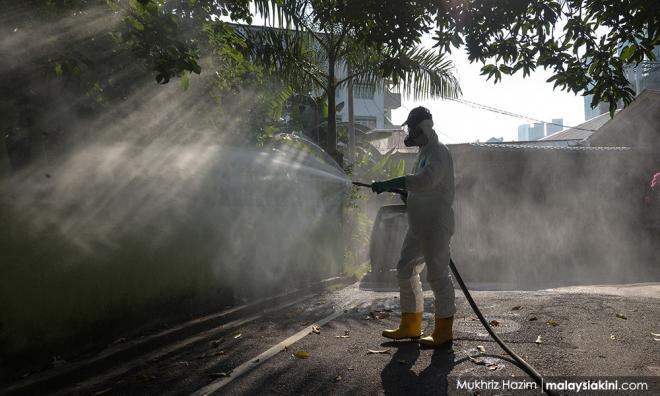
The Fire and Rescue Department uses eight types of chemicals in its public sanitation and disinfection operations at Covid-19 high-risk areas, said its director-general, Mohammad Hamdan Wahid.
He said the choice of the chemicals, which included ethanol, sodium hypochlorite and benzalkonium chloride, was made with the advice from the Health Ministry.
“When we did our research on the chemicals, they are also available in Malaysia and could be used in certain places.
“We use ethanol with an alcohol content of 60 percent and above and sodium hypochlorite 0.5 percent for the operations,” he told Bernama in Putrajaya today.
Mohammad Hamdan said the department also consulted the Chemistry Department on the standard operating procedure (SOP) for the use of the chemicals before mixing them to ensure public sanitation and disinfection in public places is in accordance with the stipulated protocol.
He said that to date, the department had conducted sanitation operations in 130 zones identified by the Health Ministry, including at locations placed under the enhanced movement control order (MCO).
Asked whether the process was also conducted in the green zone areas, he said there were also requests from local government authorities and state governments for the department to conduct disinfection exercise in the green zone areas.
“There are also cases where the department has to carry out sanitation operations repeatedly in some areas, for example at the Selayang market area, as it is a Covid-19 red zone," he added.
Mohammad Hamdan said that as of April 30, the department had conducted a total of 117 public sanitation operations, covering 10 red zones and 31 yellow zones in various states.
"The operations were at business premises, public transport terminals, places of worship, markets and residential areas," he said, adding that the department had conducted 544 public sanitation and disinfection operations at police facilities, including its Bukit Aman headquarters.
The sanitation and disinfection operations were also conducted at 316 fire stations nationwide as well as the Prisons Department’s facilities and Immigration detention depots nationwide.
On the use of personal protective equipment (PPE) by fire and rescue personnel in conducting the operations, he said the PPE for disinfection operation is different from that worn during public sanitation.
“The PPE for disinfection has to be of a higher standard and with a complete set as the chemical content is also higher. The PPE for public sanitation is thinner as the chemical content is milder,” he added. - Bernama


No comments:
Post a Comment
Note: Only a member of this blog may post a comment.